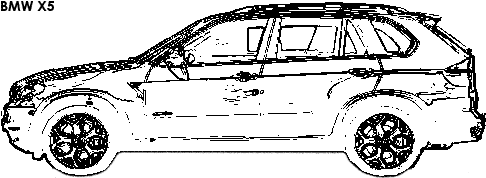BMW X5 vs Mercedes-Benz ML500
September 15, 2023
Compare BMW X5 vs Mercedes-Benz ML500 (1:1)


The BMW X5 and the Mercedes-Benz ML500 (later renamed the Mercedes-Benz GLE 500) are two luxury SUVs that have competed head-to-head in the premium SUV segment, offering a combination of performance, luxury, and advanced features.
Performance is a significant aspect of these SUVs. The BMW X5 is known for its sporty and engaging driving dynamics, typically offering a range of potent engine options, including turbocharged six-cylinders and V8s, that deliver impressive acceleration and precise handling. BMW's sporty heritage is evident in the X5's dynamic character, making it a top choice for those who prioritize spirited driving. The Mercedes-Benz ML500 (GLE 500) also offers robust performance, often featuring powerful V8 engines that provide ample power and a smooth ride. It may not be as sporty as the X5, but it focuses on a comfortable and composed driving experience, ideal for long-distance cruising.
Interior quality and technology are crucial considerations in the luxury SUV market, and both models excel in this regard. The BMW X5 typically boasts a modern and luxurious cabin with high-quality materials, advanced infotainment systems, and a user-friendly interface, including the iDrive system. Mercedes-Benz, with its reputation for elegance and luxury, offers a well-appointed interior in the ML500 (GLE 500) characterized by top-notch materials, an elegant design, and advanced tech features. Both SUVs provide a premium ownership experience with a focus on comfort, convenience, and a wide range of available features.
Brand reputation and ownership experience also play significant roles in the decision-making process. BMW and Mercedes-Benz are two of the most prestigious luxury brands globally, known for engineering excellence and a comprehensive service network. Buyers often choose between the two based on personal brand loyalty, specific feature preferences, and driving dynamics. The decision may also be influenced by factors like pricing, reliability, and dealership support.
Performance is a significant aspect of these SUVs. The BMW X5 is known for its sporty and engaging driving dynamics, typically offering a range of potent engine options, including turbocharged six-cylinders and V8s, that deliver impressive acceleration and precise handling. BMW's sporty heritage is evident in the X5's dynamic character, making it a top choice for those who prioritize spirited driving. The Mercedes-Benz ML500 (GLE 500) also offers robust performance, often featuring powerful V8 engines that provide ample power and a smooth ride. It may not be as sporty as the X5, but it focuses on a comfortable and composed driving experience, ideal for long-distance cruising.
Interior quality and technology are crucial considerations in the luxury SUV market, and both models excel in this regard. The BMW X5 typically boasts a modern and luxurious cabin with high-quality materials, advanced infotainment systems, and a user-friendly interface, including the iDrive system. Mercedes-Benz, with its reputation for elegance and luxury, offers a well-appointed interior in the ML500 (GLE 500) characterized by top-notch materials, an elegant design, and advanced tech features. Both SUVs provide a premium ownership experience with a focus on comfort, convenience, and a wide range of available features.
Brand reputation and ownership experience also play significant roles in the decision-making process. BMW and Mercedes-Benz are two of the most prestigious luxury brands globally, known for engineering excellence and a comprehensive service network. Buyers often choose between the two based on personal brand loyalty, specific feature preferences, and driving dynamics. The decision may also be influenced by factors like pricing, reliability, and dealership support.




































































